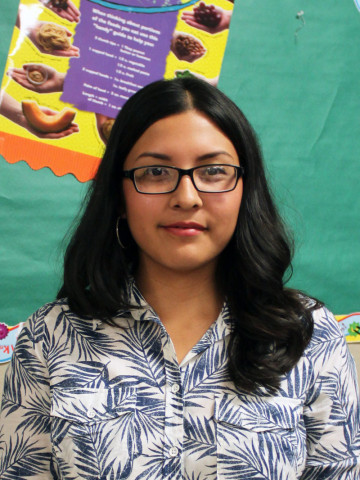
By Olivia Rodriguez
Editor’s Note: Luisa M. Armijo is the education and library director at the Torres Martinez Reservation in Thermal, Calif. With a population of just over 4,000, the reservation is home to the Cahuilla, the indigenous people of the Coachella Valley. The Education Library Center is an enrichment program that aims to provide youth on the reservation with an academic and culturally relevant learning environment. Some of the resources that it offers include tutoring, structured curriculum, parent seminars, a computer lab and a collection of books that contains native studies and archives. Coachella Uninc. spoke to Armijo about her experience working in the education center.
How did you get involved?
I was a social worker here for many years and we found that there were a lot educational, learning and cultural gaps, and those gaps were key targets for promoting things like self sufficiency, a strong sense of self, career development, college attainment and being a successful community member. I went from social service programs to developing educational programs based within a library context. That’s what inspired me to do this.
Can you explain briefly what the Education Library Center offers?
The Education Library Center is a two-fold project that houses educational programs and a comprehensive library. The Cahuilla name for the center is Pa’Chem En Anwen, which means “where we are learning” because learning is always ongoing.
This place first began as a library. But I realized that the traditional library did not really exist on the reservation. So what we did was create the concept that tribes always had libraries, but we asked ourselves what those looked like. And so with that we created all the educational programs. The educational programs are the basic focus and that branches out how to access a library.
Education is at the forefront, and when we say education we look at formal education and we look at informal education. Formal education is going to high school and going to college. Informal education is learning from your elders, learning from the reservation, learning from programs that we provide here, from living libraries where people that actually tell the stories, pass on information, give advice and present information. We incorporate both of those together.
What is your favorite part of the work that you do?
I just love being on the reservation. My favorite part is getting up every morning and driving to the reservation and coming on the reservation. Because it’s a sovereign nation, it’s within its own state, government and recognized throughout the country. To me that’s just exciting, being able to come into a first nations community and present innovative and creative programs that are needed but not available off the reservation. Here they can be created to directly help the people.
What impact has the center had on students?
Our biggest accomplishment is that we provide cutting edge programs. I’m always looking at what the trends are … and incorporating those into our program so that we never play catch up. We’re always trail-blazing, benchmarking, so when our students go into school they already have some kind of basic foundation. Hopefully that will help to close learning and opportunity gaps. Those are the greatest achievements. Plus, the center in itself is a lighthouse. Just the fact that it’s here, it’s a lighthouse resource for the community at large.
How do you measure success?
There are a lot of measures of success, but I think basically it’s to be mindful to always provide services, programs and resources that are going to be in the best interest of the tribe. On a daily basis, if a parent, community member or student leaves the educational library center knowing a new vocabulary word, fact, statistic, or other piece of information, then that’s I think how you define success. Success is defined when kids complete their homework, and understand what’s going on, and that their learning is alive. When parents work together with us in a team approach with our teachers and the schools, then that’s how you define success.
What is one priority area for the center?
The growing emphasis on higher education is at the forefront of all tribal communities across the nation. Higher education is now a very real and viable tool that our young people must access so that they can come back and learn how to successfully empower their nation … higher education offers a tool that allows them to make a difference and defend what it is to be a sovereign nation.
What is your vision for the center?
The Education Library Center is a living place that’s always evolving. I like to see it as parallel to human growth, like when you’re born to when you’re an adult. There are always these milestones, there are all these developmental changes and that’s how I look at the Education Library Center. It’s a place that’s always developing.
About the author:
 Olivia Rodriguez is from Thermal, Calif. She graduated from Desert Mirage High School in 2011 and earned her bachelor’s degree in Integrative Biology from UC Berkeley in 2015. Olivia joined Coachella Uninc. in 2015 and one day she hopes to be a health leader and work alongside other community leaders in the eastern Coachella Valley to address health inequalities in her community.
Olivia Rodriguez is from Thermal, Calif. She graduated from Desert Mirage High School in 2011 and earned her bachelor’s degree in Integrative Biology from UC Berkeley in 2015. Olivia joined Coachella Uninc. in 2015 and one day she hopes to be a health leader and work alongside other community leaders in the eastern Coachella Valley to address health inequalities in her community.